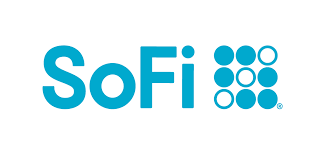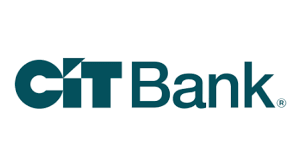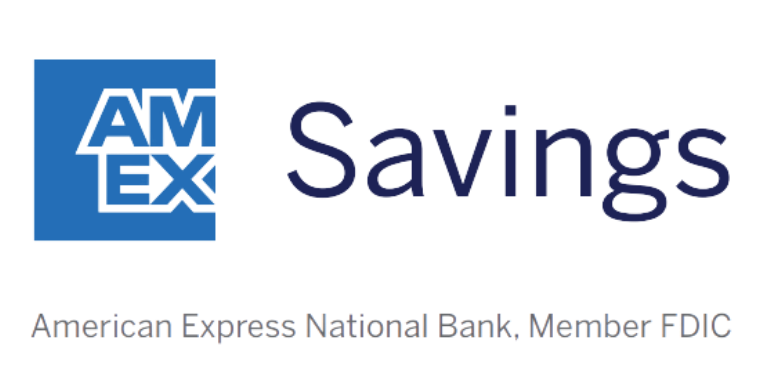Medical debt is a big financial problem for millions of Americans. Roughly 41% of adults in the U.S. have some debt from medical or dental services, according to the 2022 KFF Health Care Debt Survey.
While medical debt can be a huge stressor, you have several options that you don't get with other types of debts. We'll explain how medical debt happens, as well as how you can pay off medical debt or lower the amount you owe.
What is medical debt?
Medical debt refers to any balance you owe from healthcare services that you can't pay in full by the due date. So how does medical debt happen?
Given the cost of healthcare in the U.S., a better question might be, "How does medical debt not happen?" The healthcare industry -- including insurance companies, doctors, pharmacies, hospitals, and others -- has become extremely expensive and often confusing to understand. It's a wonder anyone's able to afford healthcare these days.
Even if you have a good health insurance plan, it's still possible to rack up big medical debt, especially if you develop a serious condition like cancer, Alzheimer's disease, or a lifelong disability.
If you can't pay your healthcare bill, several things can happen. If you just ignore it, the doctor's office may try to follow up and collect the debt. If that doesn't work, it may hire a collection agency to try to get the money. The collections agency can also sell your debt to another agency. At that point, you no longer owe the debt to the original doctor -- you owe another agency instead.
What options do I have for medical debt?
It's important to know your options for paying down medical debt. Below, we'll cover some of the methods you can consider.
Ask for a payment plan
Many hospitals and healthcare providers will let you set up a payment plan with them directly and pay off your bill over time. Ask about this option before you apply for any type of financing, like a medical credit card or loan, as a medical payment plan is often interest-free.
Medical loans
A medical loan is a personal loan that you use for medical costs. You may also be able to apply for a medical loan on your own or through the doctor's office. These loans are usually unsecured, meaning no collateral is necessary -- you won't risk losing your home or car if you have trouble making payments. Look for a loan with low interest and low or no fees. This option is best if you have a high credit score.
Medical credit cards
Another option is to charge your bill to a medical credit card, which is a credit card designed specifically for medical costs. You can apply for these on your own, or sometimes through your doctor's office, just like with medical loans. You can keep the line of credit even after you've paid off your balance, which can be helpful for ongoing medical expenses.
Just be aware that medical debt can't be reported on your credit report until it's at least six months past due. But when you charge your bill to a medical credit card (or any other type of credit card), you lose that protection because the debt is treated as credit card debt, not medical debt. Debt on a medical credit card will affect your credit score the same way as any type of credit card debt.
Also, be aware that the zero-interest financing these cards often advertise is often deferred interest. If you pay off the balance in full before the end of the promotional period, you'll avoid interest. But you'll pay interest on the full amount you financed (rather than just the outstanding amount) if any balance remains at the end of this period.
0% intro APR credit card
If you qualify for a 0% APR credit card, you can essentially use it as an interest-free loan. A regular credit card with a 0% intro period is usually a better option than a medical credit card that offers a similar no-interest window. If you can't pay off the entire balance by the end of the interest-free period, you'll only owe interest on the remaining balance with a regular credit card. Plus, medical credit card APRs tend to be higher once the no-interest period ends.
Dispute the bill
Medical bills are notorious for errors. Ask your doctor or healthcare facility for an itemized copy of your bill. Look for double billing, which is a common error, as well as any services you were billed for that aren't included in your medical records. If you're facing an especially big medical bill, you may want to consider hiring a medical billing advocate, who can help you find errors and negotiate discounts.
If you believe your health insurance company should have paid for the service, you can file a dispute with the insurer. If it still denies the claim, you have the right to an external appeal where an independent third party makes the final call.
Charitable organizations
The Affordable Care Act requires that nonprofit hospitals provide financial assistance to people who can't afford their medical bills. Some states require that for-profit hospitals provide charity care, too. If you're admitted to the hospital, ask for a copy of its financial assistance policy, which hospitals are required to provide for free.
Many organizations offer financial assistance in the form of grants for people with medical debt. Your hospital or doctor may be affiliated with such a charity -- make sure to check with them, too. These organizations generally help people below certain income thresholds, but that's not always the case.
Beyond those local options, here are a few organizations that provide financial assistance to people struggling to pay medical debt:
Debt counseling or bankruptcy
If you're facing staggering medical debt and you're not able to work, no amount of effort will pay that balance down.
In difficult cases like this, you still have options. One good solution is to reach out to a debt counselor from a nonprofit organization like the National Foundation for Credit Counseling (NFCC).
You can also speak to a bankruptcy attorney. Though bankruptcy should be reserved as a last resort, it may be the only path to financial recovery when your medical debt is substantial.
Compare savings rates
Make sure you're getting the best account for you by comparing savings rates and promotions. Here are some of our favorite high-yield savings accounts to consider.
| Account | APY | Promotion | Next Steps |
|---|---|---|---|

Open Account for SoFi Checking and Savings
On SoFi's Secure Website.
Rating image, 4.50 out of 5 stars.
4.50/5
Our ratings are based on a 5 star scale.
5 stars equals Best.
4 stars equals Excellent.
3 stars equals Good.
2 stars equals Fair.
1 star equals Poor.
We want your money to work harder for you. Which is why our ratings are biased toward offers that deliver versatility while cutting out-of-pocket costs.
|
up to 3.80%²
Rate info
You can earn the maximum APY by having Direct Deposit (no minimum amount required) or by making $5,000 or more in Qualifying Deposits every 30 days. See SoFi Checking and Savings rate sheet at: https://www.sofi.com/legal/banking-rate-sheet.
Min. to earn: $0
|
New customers can earn up to a $300 bonus with qualifying direct deposits!¹
|
Open Account for SoFi Checking and Savings
On SoFi's Secure Website. |

Open Account for CIT Platinum Savings
On CIT's Secure Website.
Rating image, 4.50 out of 5 stars.
4.50/5
Our ratings are based on a 5 star scale.
5 stars equals Best.
4 stars equals Excellent.
3 stars equals Good.
2 stars equals Fair.
1 star equals Poor.
We want your money to work harder for you. Which is why our ratings are biased toward offers that deliver versatility while cutting out-of-pocket costs.
|
4.10% APY for balances of $5,000 or more
Rate info
4.10% APY for balances of $5,000 or more; otherwise, 0.25% APY
Min. to earn: $100 to open account, $5,000+ for max APY
|
Earn a bonus of at least $225 after a one-time deposit of $25,000+.
Transfer a one-time deposit of $25,000-$49,999.99 for a bonus of $225. Transfer a one-time deposit of $50,000+ for a bonus of $300. Account must be opened with code PS2025 while this promotion lasts, and funded within 30 days. Bonus will be fulfilled within 60 days from the funding date. There is no period of time where the customer will be required to maintain the funds. Account must be open when bonus is credited. One bonus per account and primary customer. Bonus will be credited into the Platinum Savings Account that fulfills the funding requirement. Funding can be deposited all at once or incrementally.
|
Open Account for CIT Platinum Savings
On CIT's Secure Website. |

Open Account for American Express® High Yield Savings
On American Express's Secure Website.
Rating image, 4.00 out of 5 stars.
4.00/5
Our ratings are based on a 5 star scale.
5 stars equals Best.
4 stars equals Excellent.
3 stars equals Good.
2 stars equals Fair.
1 star equals Poor.
We want your money to work harder for you. Which is why our ratings are biased toward offers that deliver versatility while cutting out-of-pocket costs.
|
3.70%
Rate info
3.70% annual percentage yield as of April 17, 2025. Terms apply.
Min. to earn: $0
|
N/A
|
Open Account for American Express® High Yield Savings
On American Express's Secure Website. |
SoFi disclosure:
¹ New and existing Checking and Savings members who have not previously enrolled in Direct Deposit with SoFi are eligible to earn a cash bonus of either $50 (with at least $1,000 total Direct Deposits received during the Direct Deposit Bonus Period) OR $300 (with at least $5,000 total Direct Deposits received during the Direct Deposit Bonus Period). Cash bonus will be based on the total amount of Direct Deposit. Direct Deposit Promotion begins on 12/7/2023 and will be available through 1/31/26. See full bonus and annual percentage yield (APY) terms at sofi.com/banking#1.
² SoFi members who enroll in SoFi Plus with Direct Deposit or by paying the SoFi Plus Subscription Fee every 30 days or with $5,000 or more in Qualifying Deposits during the 30-Day Evaluation Period can earn 3.80% annual percentage yield (APY) on savings balances (including Vaults) and 0.50% APY on checking balances. There is no minimum Direct Deposit amount required to qualify for the stated interest rate. Members without either SoFi Plus or Qualifying Deposits, during the 30-Day Evaluation Period will earn 1.00% APY on savings balances (including Vaults) and 0.50% APY on checking balances. Only SoFi Plus members are eligible for other SoFi Plus benefits. Interest rates are variable and subject to change at any time. These rates are current as of 1/24/25. There is no minimum balance requirement. Additional information can be found at http://www.sofi.com/legal/banking-rate-sheet. See the SoFi Plus Terms and Conditions at https://www.sofi.com/terms-of-use/#plus.
³ We do not charge any account, service or maintenance fees for SoFi Checking and Savings. We do charge a transaction fee to process each outgoing wire transfer. SoFi does not charge a fee for incoming wire transfers, however the sending bank may charge a fee. Our fee policy is subject to change at any time. See the SoFi Checking & Savings Fee Sheet for details at sofi.com/legal/banking-fees/.
⁴ SoFi Bank is a member FDIC and does not provide more than $250,000 of FDIC insurance per depositor per legal category of account ownership, as described in the FDIC’s regulations.
Any additional FDIC insurance is provided by the SoFi Insured Deposit Program. Deposits may be insured up to $3M through participation in the program. See full terms at SoFi.com/banking/fdic/sidpterms. See list of participating banks at SoFi.com/banking/fdic/participatingbanks.
⁵ We’ve partnered with Allpoint to provide you with ATM access at any of the 55,000+ ATMs within the Allpoint network. You will not be charged a fee when using an in-network ATM, however, third-party fees incurred when using out-of-network ATMs are not subject to reimbursement. SoFi’s ATM policies are subject to change at our discretion at any time.
⁶ Early access to direct deposit funds is based on the timing in which we receive notice of impending payment from the Federal Reserve, which is typically up to two days before the scheduled payment date, but may vary.
⁷ Overdraft Coverage is limited to $50 on debit card purchases only and is an account benefit available to customers with direct deposits of $1,000 or more during the current 30-day Evaluation Period as determined by SoFi Bank, N.A. The 30-Day Evaluation Period refers to the “Start Date” and “End Date” set forth on the APY Details page of your account, which comprises a period of 30 calendar days (the“30-Day Evaluation Period”). You can access the APY Details page at any time by logging into your SoFi account on the SoFi mobile app or SoFi website and selecting either (i) Banking > Savings > Current APY or (ii) Banking > Checking > Current APY. Members with a prior history of non-repayment of negative balances are ineligible for Overdraft Coverage.
What's the best way to get rid of medical debt?
In general, it's best to contact your doctor's office or hospital first to see if you can work out a medical payment plan, or even medical debt forgiveness. If you were treated at a hospital, ask if charity care is available.
If those aren't options, seeking out a loan or credit card can be a good next step. If you're having trouble paying your bills and aren't sure what to do, it's always a good idea to reach out to a counselor from the NFCC for personalized and affordable help. But if you have no realistic hope of paying off your medical debt, declaring bankruptcy is worth considering.
FAQs
-
About 10% of American adults don't have health insurance, which leaves you more vulnerable if you have a big medical expense. The popularity of high-deductible health plans, which have lower premiums and high out-of-pocket costs, is another contributor. People who opt for a short-term health plan or health sharing ministry also frequently find themselves with medical debt because these plans offer limited benefits.
-
It depends. The three major credit bureaus no longer include unpaid medical bills of less than $500, medical debt that's less than six months old, or paid medical collections in credit reports, so these debts won't affect your credit score. Medical debt over $500 that's more than six months old could still hurt your credit score.
We're firm believers in the Golden Rule, which is why editorial opinions are ours alone and have not been previously reviewed, approved, or endorsed by included advertisers. Motley Fool Money does not cover all offers on the market. Motley Fool Money is 100% owned and operated by The Motley Fool. Our knowledgeable team of personal finance editors and analysts are employed by The Motley Fool and held to the same set of publishing standards and editorial integrity while maintaining professional separation from the analysts and editors on other Motley Fool brands. Terms may apply to offers listed on this page.